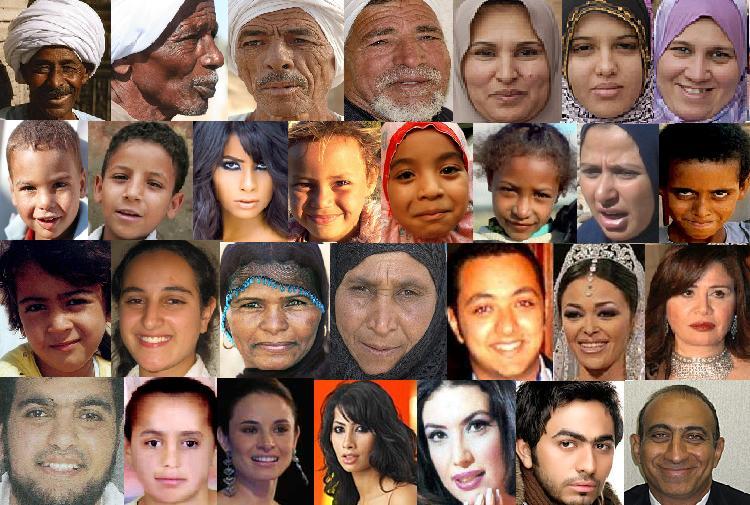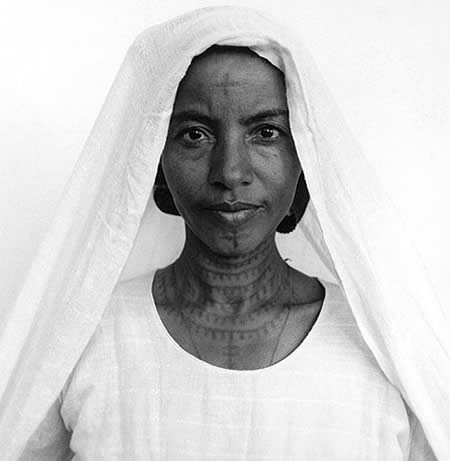Actually, I challenge this forum to name ANY ancient tribe/nation/civilization that did not practice at least these two customs.
- Animal Worship - They did that to!
- Ancestor Worship/Veneration - And that!
-
We are currently performing site maintenance, parts of civfanatics are currently offline, but will come back online in the coming days. For more updates please see here.
You are using an out of date browser. It may not display this or other websites correctly.
You should upgrade or use an alternative browser.
You should upgrade or use an alternative browser.
The African Origin of Ancient Egyptian Civilization
- Thread starter Kahotep
- Start date
- Status
- Not open for further replies.
Verbose
Deity
You really real deal in "pre-" and and "postnachronisms"? For me stuff just positioned as if outside of historical time in general works fine.Actually in this case it's a massive prenachronism.

Kahotep
Warlord
Incidently, ancient Egyptians most likely looked much the same as the Early modern Egyptians that got colonized, who in turn looked much the same as modern day Egyptians (or Copts if you want to avoid the Arabic additions), who most certainly do not look "black."
And I notice that you ignored the second part of my statement. Wholesale change of phenotype, particularly of darker to lighter, requires a hell of a lot more than a few invasions.
If you think that all Egyptians don't look black, or that I'm proposing a wholesale change in phenotype (i.e. all Egyptians turning from black to non-black), you obviously have not seen many photos of Egyptians:





I don't know about you, but these Egyptians look considerably blacker than either Obama or the Copts you claim to have seen.
Verbose
Deity
Of course, afaik no one has so far denied the active involvement of people who certainly look "black" to US eyes.If you think that all Egyptians don't look black, or that I'm proposing a wholesale change in phenotype (i.e. all Egyptians turning from black to non-black), you obviously have not seen many photos of Egyptians:
I don't know about you, but these Egyptians look considerably blacker than either Obama or the Copts you claim to have seen.
Here's a collage-thing quickly dredged up by google of a mixed bunch of modern Egyptians. What we're talking about is arguments for counting some but not others, where 19th c. westerners would tend to discount people considered "too dark", and some questions remains as to what extent you are willing to count the the more fair-skinned lot.
In other words, which of these will be allowed to represent ancient Egypt? Why and why not?

lol, there is a difference between "black skin" and "negroid" features. Indians are considered caucasian yet many of them have black skin, but they have caucasoid features. Negroid features typically include a wider nose, different cheekbones, and a certain hair type. Sub-Saharan Africans are way different looking than North Africans.
If you think that all Egyptians don't look black, or that I'm proposing a wholesale change in phenotype (i.e. all Egyptians turning from black to non-black), you obviously have not seen many photos of Egyptians:





I don't know about you, but these Egyptians look considerably blacker than either Obama or the Copts you claim to have seen.
Kahotep, you seam selective in your picture choosing. Most modern Egyptians look more Arabic than Black or "white".
Kahotep
Warlord
Kahotep, you seam selective in your picture choosing. Most modern Egyptians look more Arabic than Black or "white".
My point was not to say that all modern Egyptians look like the people in those photos. My point was that, contrary to what someone else was arguing, there are Egyptians who do look "black".
My point was not to say that all modern Egyptians look like the people in those photos. My point was that, contrary to what someone else was arguing, there are Egyptians who do look "black".
Let's see, in my quote, I was talking about Copts in particular, who look much like this:

Do any of them "look black" to you?
Egypt of course is a very mixed nation, and there are many, many Egyptians who have one or more parents from the Sudan/points south. Sadat himself had a Sudanese mother. In the course of time, they would be blended into the Egyptian stew, but that clearly hasn't happened yet. And of course, the residents of Upper Egypt get darker the further south they go. Cherrypicking those does not support your point. (This also brings up the conflation of Egyptian as a nationality and Egyptian as a race/ethnicity, problematic as such a thing is. You are using characteristics of Egyptians by one definition to argue that those same characteristics apply to Egyptians by the other definition.)
If you think that all Egyptians don't look black, or that I'm proposing a wholesale change in phenotype (i.e. all Egyptians turning from black to non-black), you obviously have not seen many photos of Egyptians:
Incidently, as a matter of language and precision, saying that "Egyptians don't look black" is not the same as saying that "no Egyptians look black." Replace Egyptians with Americans and see you can understand the distinction. Further, if at some point in the past, "true Egyptians" were recognizably black, but now the majority of Egyptians aren't so, that is a wholesale change of phenotype, which does not imply a total and complete change of phenotype as you seem to believe.
I would say that virtually none of the people in those photos look black; they may have dark skin (although not that dark, compared to, say, West Africans) but for the most part they don't have typical black features. If those are the blackest Egyptians around today, then I'd say that you've got evidence at most that some of the ancestors of modern Egyptians were black.
I notice that no-one has mentioned the monk Abba Moses the Ethiopian, one of the desert fathers, who lived in Egypt in the fourth century. He was a Nubian ("Ethiopia" in antiquity generally meant somewhere south of Egypt) and his black skin was noted in passing in some of the texts referring to him. But if most or even very many Egyptians at that time were black or looked like Nubians, why would this have been mentioned?
I notice that no-one has mentioned the monk Abba Moses the Ethiopian, one of the desert fathers, who lived in Egypt in the fourth century. He was a Nubian ("Ethiopia" in antiquity generally meant somewhere south of Egypt) and his black skin was noted in passing in some of the texts referring to him. But if most or even very many Egyptians at that time were black or looked like Nubians, why would this have been mentioned?
Kahotep
Warlord
Do any of them "look black" to you?
No, but these Copts do:




See, I can cherry-pick images of Copts too, just like whoever made the collage you cite!
So much for your claim that Copts (and thus presumably their ancient Egyptian ancestors) don't (all) look black.
But all this is irrelevant. You were asking me how invasions could change the phenotype of a population. Well, here's what a scientist has to say on this issue:
The information from the living Egyptian population may not be as useful because historical records indicate substantial immigration into Egypt over the last several millennia, and it seems to have been far greater from the Near East and Europe than from areas far south of Egypt. "Substantial immigration" can actually mean a relatively small number of people in terms of population genetics theory. It has been determined that an average migration rate of one percent per generation into a region could result in a great change of the original gene frequencies in only several thousand years. (This assumes that all migrants marry natives and that all native-migrant offspring remain in the region.) It is obvious then that an ethnic group or nationality can change in average gene frequencies or physiognomy by intermarriage, unless social rules exclude the products of "mixed" unions from membership in the receiving group. More abstractly this means that geographically defined populations can undergo significant genetic change with a small percentage of steady assimilation of "foreign" genes. This is true even if natural selection does not favor the genes (and does not eliminate them).
I would say that virtually none of the people in those photos look black; they may have dark skin (although not that dark, compared to, say, West Africans) but for the most part they don't have typical black features.
What are "black features"?
Kahotep
Warlord
Double post, plz delete
No, but these Copts do:
Okay, maybe I should have been more explicit. My cherrypicking of images was intended more to mock your cherrypicking than to prove any point. You might have realized that if you had bothered reading the rest of my post.
So much for your claim that Copts (and thus presumably their ancient Egyptian ancestors) don't (all) look black.
Umm, that claim has already been conclusively demonstrated. A single Copt who doesn't look black would have already demonstrated it, and I gave several. More to the point, please reread the last 2 sentences of my previous post, which clarify this point.
Huayna Capac357
Deity
Plotinus, didn't Ethiopians consider themselves "red people", different from whites like Greeks and blacks like their southern neighbors? That may apply in this situation.
Cynovolans
Not in my dimension.
No, but these Copts do:
Spoiler :



Are you sure these are ethnic Copts? As there is a difference between ethnic Copts and members of the Coptic Church.
I just don't get why do you guys seem to think that ancient Egypt was any less diverse in its pheno- and genotypes than Egypt of today?
The whole black OR white argument seems to be completely off. Black AND white AND any shade in between seems like much more logical answer.
The whole black OR white argument seems to be completely off. Black AND white AND any shade in between seems like much more logical answer.
Plotinus, didn't Ethiopians consider themselves "red people", different from whites like Greeks and blacks like their southern neighbors? That may apply in this situation.
No, because as I said, he wasn't Ethiopian, he was Nubian. But where he came from isn't really important - the relevant point is that people commented on his blackness, indicating that most people in Egypt at that time were not black. The sources contrast his darker skin with the lighter skin of everyone else. The desert fathers, incidentally, were a good mixture of native Egyptian Copts from the countryside and sophisticated immigrants from elsewhere in the Roman world - so Moses was not simply darker than (say) cosmopolitan and largely non-indigenous Alexandrians, he was darker than ordinary rural Egyptians, and sufficiently so for this to be a point of comment.
Bast
Protector of Cats
This is a little essay I wrote during the past summer. My thesis is that the ancient Egyptians were not European or Southwest Asian "Caucasians" as popularly imagined, but were rather a dark-skinned northeast African population whom we might call "black". Before I continue, I want to say that I am not an Afrocentrist. I reject many Afrocentrist claims (black Cleopatra, black Hannibal, black Olmecs, etc.). Saying that the ancient Egyptians were black does not make me an Afrocentrist any more than saying that the ancient Greeks were white makes one a Eurocentrist. It is simply correct.
The African Origin of Ancient Egyptian Civilization
Few bygone civilizations fascinate us as much as that of the ancient Egyptians. The kingdom along the Nile River has been the subject of countless books, magazine articles, movies, and television shows and documentaries. There is even a hotel in Las Vegas with an ancient Egyptian theme! Museums all over the world dedicate entire galleries to excavated Egyptian artifacts, and Egypt itself receives millions of tourists flocking to photograph its ruins each year.
There are many reasons behind our infatuation with ancient Egypt. One is its sheer antiquity. Egypt is one of the worlds oldest civilizations, blossoming at a time when most of the rest of the world (including the ancestors of the Greeks, Chinese, and Maya) had yet to build anything more impressive than stick huts. Another reason is that we are amazed by the Egyptians achievements: their colossal temples and tombs, their uncannily well-preserved mummies, their art, and their glittering jewelry. A third reason is that despite more than two centuries of study by Egyptologists, much about ancient Egypt still remains mysterious. Many questions about the Egyptians still have their answers buried by the sands of time. For instance, how were the pyramids built? What was responsible for the early death of the boy pharaoh Tutankhamun? And how did the Egyptians influence later civilizations such as Greece and Rome?
However, the most contentious question concerning ancient Egypt, the one that has inspired the most emotionally charged arguments, concerns their ethnic identity. Egypt lies on the African continent, specifically in its northeastern region, yet traditionally historians have classified it as part of the Near Eastern (alongside Sumer, Babylon, and Israel) or Mediterranean (alongside Greece and Rome) cultural blocs. Whenever anyone makes a movie or television show set in Egypt, white rather than black actors are chosen to play the Egyptians; for instance, Yul Brynner as the pharaoh Rameses in C.B. Demilles The Ten Commandments, or Arnold Vosloo as Imhotep in The Mummy. The implication here is that despite being in Africa, ancient Egypt was really a white civilization of European or Asian origin rather than being truly African.
This view is wrong. The best evidence we have suggests that the civilization of ancient Egypt was established in the main by indigenous Africans. This is not to say that there was no influence, biological or cultural, from Asia or Europe on Egypt, but any such influence was slight. The ancient Egyptians, biologically and culturally, were fundamentally Africans.
Biologically African
Before we begin, we need to clarify on what it means to be biologically African. Most people think they know what African (or Negroid) features look like: for instance, broad noses and thick lips. While many Africans do have those features, there are many who do not. According to the physical anthropologist Jean Hiernaux in his 1975 book The People of Africa (Hiernaux 1975):
Narrower noses and thinner lips, so-called Caucasian features, are particularly common in northeastern African countries not far from Egypt, such as Ethiopia, Somalia, Eritrea, and northern Sudan. Why this is so remains unknown, although some anthropologists have noted a correlation between nose width in humans and air moisture, with narrower noses predominating among peoples living in drier climates. The point is that native African facial features are diverse and are not limited to the stereotypical broad-nosed, full-lipped Negroid type.
With that in mind, how can we tell whether the Egyptians skeletal structure was more African or European/Asian?
One way physical anthropologists can tell how closely related certain populations are is by studying the overall shape of their skulls, because skull shape varies from population to population. Populations with the most similar-looking skulls are considered more closely related.
Analyzed this way, ancient Egyptian skulls in general turn out to be more similar to skulls from northeastern African countries such as Ethiopia or northern Sudan than to European or Asian skulls (Kemp 2005). Sub-Saharan traits are especially strong in skulls from southern Egypt (also known as Upper Egypt) (Keita 1990, 2005), although they are less pronounced in northern Egyptian (or Lower Egyptian) skulls.
However, there is some evidence implying that Egyptians did eventually mix with Asians and Europeans. Comparison of Egyptian skulls across time shows continuity for most of Egyptian history, but there is a degree of change in later periods, when Egypt experienced increased infiltration from foreigners (Zakrzewski 2004). By then, however, Egyptian civilization was in decline. Any foreign admixture during Egypts golden years was small in scale.
Ancient Egyptians also appear to be more closely related to Africans than to Europeans or Asians when we take into account the shape of their skeletons beyond their skulls. Particularly important here is the length of the limbs. People from Africa have proportionately longer limbs than people from Europe or Asia, because longer limbs more easily dissipate heat. Ancient Egyptians limb proportions are more similar to those of Africans than Europeans or Asians (Zakrzewski 2003). One study (Robins and Shute 1986) found the Egyptians limbs to be even longer than those of most Africans, calling them super-Negroid!
Another line of evidence concerns hair morphology. One might think that all one has to do to tell what hair texture the ancient Egyptians had is to simply look at their mummies, but this can be misleading. Analysis of hair from Egyptian mummies shows that the proteins in it have been damaged, possibly by chemicals used in the mummification process (Bertrand 2003). Damage to hairs chemical structure can change texture. Fortunately, there is a more reliable way to tell the original texture of a hair is by measuring the cross-section with a special instrument called a trichometer. Using this, one can get the minimum and maximum diameter of a hair. Then, one divides the minimum measurement by the maximum and multiplies the product by a hundred, producing an index.
Populations vary in the indices of their hairs cross-section. Curly-haired populations, such as Africans and Melanesians, have indices between 55 and 70. On the other hand, straight-haired populations, such as Europeans, Asians, and Native Americans, have indices above 70.
When ancient Egyptian hair samples are subjected to trichometer measurements, they typically turn out indices between 35 and 66.5. This indicates that most ancient Egyptians had naturally curly hair, as do most Africans (MBantu and Supia 2001). However, it must be noted that Egyptians usually shaved their heads to rid themselves of hair lice and wore wigs most of the time (often the hair used to make the wigs was imported from surrounding nations). Thus ancient Egyptian artwork does not usually depict Egyptians with their natural hair.
Finally, there is the question of the Egyptians skin color. You might think that looking at Egyptian paintings would easily answer this, but the problem is that Egyptian art was symbolic rather than realistic. Characters in Egyptian murals may be brown, yellow, gold, green, white, or black depending on the symbolism. The most common convention in earlier Egyptian art is to paint men brown and women yellow, but in later dynasties both sexes are portrayed as brown-skinned. Whatever caused this change in convention remains a mystery, but the point is that Egyptian art is not meant to accurately portray its subjects skin tones.
If we wanted to more accurately determine the skin color of the ancient Egyptians, we should look at the skin cells in their mummies and take note of the amount of melanin, the pigment that determines skin tone. One study (Mekota and Vermehren 2005) did just that when analyzing Egyptian mummies soft tissue. They described the skin cells as being pack with melanin, as expected for specimens of Negroid [African] origin. Unfortunately, they did not go into depth or specify exactly how much melanin was in the skin cells, but by choosing the word Negroid, they implied that the ancient Egyptians skin tones were within the range we call black.
In conclusion, the ancient Egyptians were, by and large, not white people like Yul Brynner or Arnold Vosloo. In fact, if we saw them today, we would probably call them black.
Physical anthropology is not the only discipline which provides evidence for the African origin of ancient Egypt. Archaeology also shows us that ancient Egyptian civilization was fundamentally rooted in Africa as well.
Archaeologically African
The oldest evidence of an organized society in Egypt comes from the countrys far south, in a basin called Nabta Playa out in the Sahara Desert. In this barren environment, archaeologists have found the remains of villages with huts built in straight rows, wells, stone-roofed chambers with the bones of dead cattle (most likely sacrificed) buried within, and even a circle of megaliths similar to Englands Stonehenge. These ruins date back to between the 10th and 7th millennia BC. Back then, the Sahara was grassland, and there was a lake within the basin, allowing people to live there (Wendorf and Schild 1998).
The Nabta Playa proto-civilization may represent the earliest stage of Egyptian civilization. One reason to think so is the evidence for cattle sacrifice there. Cattle sacrifice was also practiced by ancient Egyptians; as many as 16,000 cattle were sacrificed in one year to the god Amun during the reign of pharaoh Rameses III (Dollinger 2009). Perhaps this Egyptian tradition had its roots in Nabta Playa.
Around 5,500 years ago, the Sahara dried up, forcing the people living there into Egypts Nile Valley, where they adopted farming. Soon, two early civilizations developed, one in northern Egypt and another in southern Egypt. Of these two cultures, it was the southern Egyptians who developed what we think of as ancient Egyptian civilization. It is in southern Egypt that we first find evidence of social and economic differentiation among people, indicating the establishment of a social hierarchy similar to that of later Egyptian culture. The institution of the pharaoh also appears to be southern in origin; the oldest artifact with pharaonic iconography on it is an incense burner found in Qustul, just north of the modern Egypt/Sudan border. In time, the culture of Upper Egypt dominated that of Lower Egypt and even conquered it by 3100 BC, making Egypt a single country for the first time in history (Bard 1994).
The genesis of ancient Egyptian culture in the countrys south is inconsistent with any argument that Egyptian civilization is part of the Near Eastern or Mediterranean cultural bloc. If civilization in Egypt was indeed an import from Asia, we would expect the north to dominate and conquer the south. Instead, the reverse was the case, which shows that Egyptian culture was essentially an indigenous---and therefore African---development.
Linguistically African
The Ancient Egyptian language is classified by most linguists as one of a phylum of languages called Afroasiatic or Afrasian. This language phylum is believed to have originated in the Horn of Africa (the region encompassing Ethiopia, Somalia, and Eritrea) between 15,000 and 13,000 BC and spread to Egypt between 12,000 and 10,000 BC (Ehert 1996). Other examples of Afrasian languages include Hausa (spoken in Nigeria), Tuareg (spoken throughout the southern Sahara), and Oromo (spoken in Ethiopia).
Culturally African
Before I begin, I will admit that Africans do not belong to a single culture. In fact African cultures have always been diverse. Among the different types of cultures that have developed in Africa are urban civilizations, rural chiefdoms, pastoralist tribes, and hunter-gatherer bands. Broad generalizations about African cultures are therefore difficult to make.
With that said, the ancient Egyptians did share many customs with several other societies in Africa. Among these customs:
Divine Kingship: Unlike in Mesopotamia, where the king was an intermediary between the gods and the mortal population, in Egypt the pharaoh was a god who had the power to make the Nile flood and inundate farmers fields. In other African societies, the king is also thought to be a god with control over the weather; his duty is to make it rain.
Circumcision: In both ancient Egypt and some African societies, children would be circumcised as a coming-of-age rite.
Animal Worship: Egyptians thought that certain animals were living representations of their gods. For instance, cats represented the goddess Bast, cattle the goddess Hathor or the god Apis, and crocodiles the god Sobek. Many African societies also practice this type of animal worship.
Ancestor Worship/Veneration: The Egyptians believed in honoring their deceased ancestors and would hold feasts in their honor. Ancestor veneration is also widespread in the rest of Africa.
Voodoo: The Egyptians believed that if you made an image of your enemies and damaged it, the enemies would be hurt as well. A similar belief is found in the voodoo religions of Africa.
The above is far from a complete list of shared cultural practices between ancient Egypt and the rest of Africa, but it should suffice to show that the Egyptians had at least a little in common with other African peoples.
Why is Egypt not recognized as African?
The ancient Egyptians were Africans. Their biology, language, and culture all evolved within Africa, not in Asia or Europe. Yet most people do not realize this and continue to think of Egypt as part of the Near East or Mediterranean.
This reason for this should be obvious: it is a legacy of racism. When Westerners began studying the remains of ancient Egypt in the 18th and 19th centuries, they could not admit that native Africans built this civilization. After all, many Western economies depended on the subjugation and exploitation of Africans, whether as slaves or colonial subjects. The justification for this was that Africans were dim-witted savages that needed to be dominated by the white man. If one of the worlds earliest and most influential civilizations was built by Africans, that justification for exploitation would be refuted. Therefore, early Egyptologists argued that the Egyptians were really invaders from Europe or Asia rather than native Africans.
Fortunately, modern science has marched on since those prejudiced beginnings, and has shown us that the ancient Egyptians were indeed of African origin. Unfortunately, most people are unaware of the evidence connecting Egypt to the rest of Africa, so popular culture continues to depict it as non-African.
Why Egypts Africanity must be recognized
Acknowledging the African roots of ancient Egypt is important for two reasons. The first reason is that it will make our reconstructions of ancient Egypt more accurate. When recreating the past we must strive to be as accurate as possible. Failure to be accurate would lead to the propagation of misconceptions that distort our view of the past.
The second reason is that denying Egypt its Africanity in spite of the facts does a disservice to people of African descent. It denies them their heritage and sends the message that people of their stock could not have accomplished a civilization as powerful or influential as Egypt. It therefore perpetuates racism against Africans and people with African ancestry.
If we are to challenge racism and come together as one species, we must admit the fact that people of all skin tones have contributed to human development throughout history. We should stop pretending that only the light-skinned peoples of Europe and Asia matter in history. To continue to do so is to perpetuate a harmful lie.
It is time to accept the truth. One of the worlds oldest civilizations, one which help lay the foundations for our own modern civilization, was established by Africans.
Works Cited
Bard, Kathryn A. "The Egyptian Predynastic: A Review of the Evidence." Journal of Field Archaeology 21.3 (1994): 265-288.
Bertrand, L., et al. "Microbeam synchrotron imaging of hairs from Ancient Egyptian mummies." Journal of Synchroton Radiation (2003).
Dollinger, Andre. "Farmed and Domesticated Animals." An introduction to the history and culture of Pharaonic Egypt. 24 June 2009
<http://www.reshafim.org.il/ad/egypt/timelines/topics/domesticated_animals.htm>
Ehert, Christopher. "Ancient Egyptian as an African Language, Egypt as an African Culture." Egypt in Africa. Comp. Theodore Celenko. Indianapolis: Indianapolis Museum of Art and Indi¬ana University Press, 1996. 25-27.
Hiernaux, Jean. The People of Africa. N.p.: Encore Editions, 1975.
Keita, S.O.Y. "Early Nile Valley Farmers, From El-Badari, Aboriginals or European Agro-Nostratic Immigrants? Craniometric Affinities Considered With Other Data." Journal of Black Studies 36.2 (2005): 191-208.
Keita, S.O.Y. "Studies of Ancient Crania from Northern Africa." American Journal of Physical Anthropology 83 (1990): 35-48.
Kemp, Barry J. Ancient Egypt: Anatomy of a Civilization. 1989. 2nd ed. N.p.: Routledge, 2005. 53.
M'bantu, Anu, and Fari Supia. "Egyptology: Hanging in the Hair." Ancient Africa's Black Kingdoms. Ed. Myra Wysinger. 8 July 2001. 24 June 2009 <http://wysinger.homestead.com/hair2.html>.
Mekota, A.M., and M. Vermehren. "Determination of optimal rehydration, fixation and staining methods for histological and immunohistochemical analysis of mummified soft tissues." Biotechnic & Histochemistry 80.1 (2005): 7-13.
Robins, G., and C.C.D. Shute. "Predynastic Egyptian stature and physical proportions." Human Evolution 1 (1986): 313-324.
Wendorf, Fred, and Romuald Schild. "Late Neolithic megalithic structures at Nabta Playa (Sahara), southwestern Egypt." The Comparative Archaeology Web. Mar. 1998. 24 June 2009 <http://www.comp-archaeology.org/WendorfSAA98.html>.
Zakrzewski, Sonia R. "Intra-population and temporal variation in ancient Egyptian crania." Program of the Seventy-Third Annual Meeting of the American Association of Physical Anthropologists. The Hyatt Regency Hotel, Tampa, FL. 14 Apr. 2004.
Zakrzewski, Sonia R. "Variation in Ancient Egyptian Stature and Body Proportions." American Journal of Physical Anthropology 121 (2003): 219-229.
Great post! Egypt was, is and will forever be AFRICAN.

Huayna Capac357
Deity
No, because as I said, he wasn't Ethiopian, he was Nubian. But where he came from isn't really important - the relevant point is that people commented on his blackness, indicating that most people in Egypt at that time were not black. The sources contrast his darker skin with the lighter skin of everyone else. The desert fathers, incidentally, were a good mixture of native Egyptian Copts from the countryside and sophisticated immigrants from elsewhere in the Roman world - so Moses was not simply darker than (say) cosmopolitan and largely non-indigenous Alexandrians, he was darker than ordinary rural Egyptians, and sufficiently so for this to be a point of comment.
Sorry for the misconception, I meant in general. As in Ethiopians are approx. equal to ancient Egyptians type thing.
In your civilopedia entry for the Ethiopians, you stated that the "red people" idea is the case. I wasn't talking about Moses the Ethiopian, but about Ethiopians as a people.
I just wanted some back-up here

No, because as I said, he wasn't Ethiopian, he was Nubian. But where he came from isn't really important - the relevant point is that people commented on his blackness, indicating that most people in Egypt at that time were not black. The sources contrast his darker skin with the lighter skin of everyone else. The desert fathers, incidentally, were a good mixture of native Egyptian Copts from the countryside and sophisticated immigrants from elsewhere in the Roman world - so Moses was not simply darker than (say) cosmopolitan and largely non-indigenous Alexandrians, he was darker than ordinary rural Egyptians, and sufficiently so for this to be a point of comment.
St.Moses the black was a bad ass.
- Status
- Not open for further replies.
Similar threads
- Replies
- 2
- Views
- 768
- Replies
- 2
- Views
- 378
- Replies
- 14
- Views
- 2K
